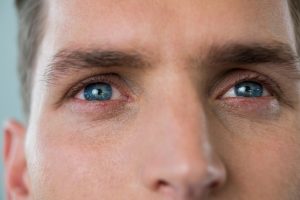Although their name can cause alarm, and their presence can be distressing, cataracts are one of the less serious eye-related conditions. Despite being the most common cause of impaired vision throughout the world, cataracts can easily be dealt with, and effective treatments are available to avoid any risk of sight damage or blindness being caused by leaving them unattended.
Situated behind the coloured part of your eye, the lens is a clear piece of tissue that lets the light pass through, cataracts are hazy patches in this lens, obstructing daylight in a similar manner to clouds blocking sunshine. Eventually, the lens will become so misty that although the light still filters through, patients are unable to focus on details. Cataracts can be present in new-born babies are more common among diabetics, but they are usually associated with older generations and men and women are equally at risk.
Cataracts often develop in both eyes, but at different speeds, and it can take years for a person to notice the deterioration in their vision. As with so many other medical issues, the key to successful treatment lies in identifying possible symptoms as early as possible. Our Opticians will be able to spot the presence of cataracts during a routine eye test, using a device called an ophthalmoscope, which directs a bright light through the lens of each eye to highlight any resultant cloudiness. Early warning signs also include difficulties seeing things in dim or bright conditions, discomfort when facing towards powerful light sources, washing out of colours and problems focusing on written words or a TV picture. Other symptoms involve halos around light sources and double vision, although these are relatively uncommon.
Experts are uncertain about the exact cause of cataracts, but there are some things everyone can do to minimize their personal susceptibility. A healthy diet is a key factor in helping to prevent cataracts from developing, as is no smoking. Perhaps surprisingly, wearing a broad-brimmed or peaked cap can also make a difference, because if means the eyes don’t have to filter out harsh sunlight that contains harmful UV rays.
If you do develop cataracts, medical treatment typically involves a small operation as an outpatient, under local anaesthetic. With liquid drops helping to dilate the pupil, a surgeon breaks down the lens into tiny pieces using ultrasound, before the segments are sucked out through a small incision in the cornea. A bespoke artificial lens is then inserted, made from plastic or silicone, and designed to remain in place permanently. It is normally possible to go home once the surgery is over, and recuperation should involve little more than avoiding strenuous activities for a few days afterwards.






0 Comments
Leave A Comment